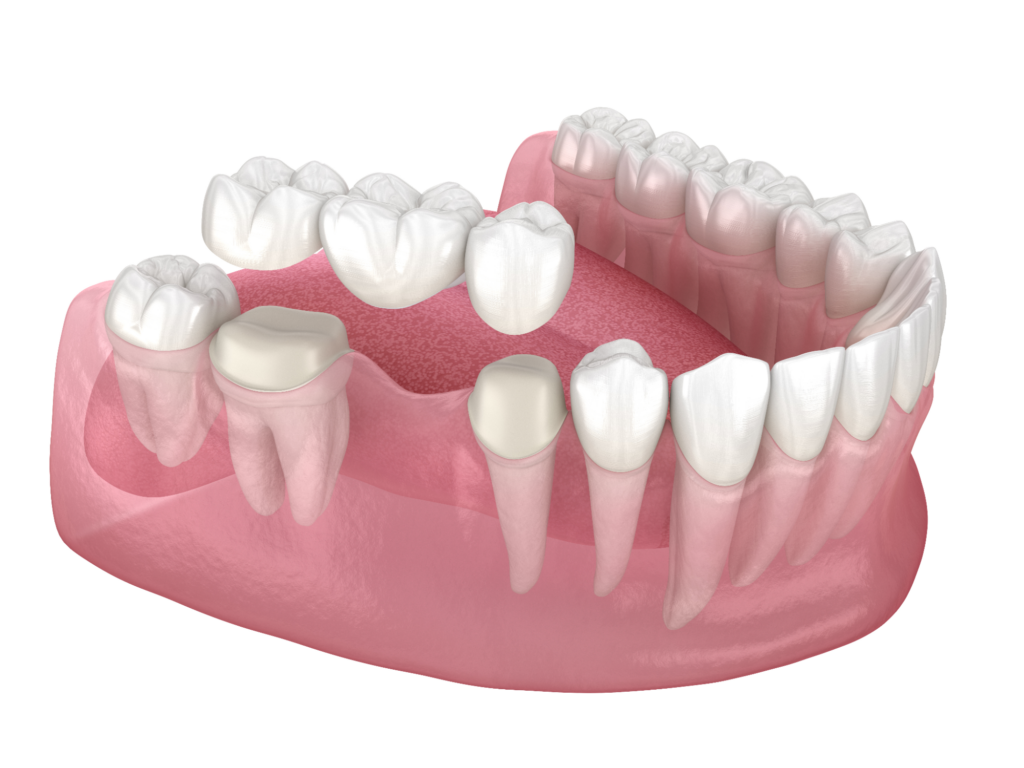Tooth enamel is the outer layer of your teeth. It is actually the hardest substance in the human body. Unfortunately, this does not make it impervious to damage. Over time, your enamel can erode leaving your teeth exposed. Dental bonding for enamel loss is a relatively easy procedure that your dentist may use in cases like this. Bonding is used to improve the appearance of your teeth while also offering protection. In this article, we discuss dental bonding for enamel loss.
What is dental bonding?
Dental bonding is a cosmetic dental procedure in which your dentist applies a tooth-coloured resin to your tooth. It is “bonded” to your tooth using a special light. This light hardens the composite resin and, once polished,leaves your tooth with a natural-looking finish.
Below are some of other the many ways dental bonding can be useful:
- To repair small cavities
- For restoring chips or cracks
- To close small spaces or gaps between teeth
- To alter the shape of a tooth
- For general smile restoration to protect a tooth
Dental bonding for enamel loss
Dental bonding can be used to treat acute and advanced enamel loss. The composite resin helps to protect your exposed teeth. It offers strength by giving your teeth an extra layer of protection. It is a good option to treat enamel loss as it is quick, easy and cost-effective. Of course, it may not be right for everyone, so you should always consult your dentist for help choosing suitable treatment options.
What does dental bonding involve?
Dental bonding is a fairly quick and straightforward procedure. Your dentist will explain everything you need to know about this dental treatment in detail. However, below are the steps you can generally expect when having dental bonding:
1. Preparation
There isn’t much preparation needed with dental bonding. Your dentist uses a shade guide to pick a resin colour that closely matches your natural teeth. Your dentist then roughens the surface of your tooth and applies a conditioning liquid. This helps the bonding material to adhere to your tooth.
2. Bonding
The resin is applied, moulded and shaped accordingly. The resin is hardened with a special light. Once the composite resin is set, your dentist may do a little more shaping and then finish it off with a polish.
3. Aftercare
The entire procedure usually takes between 30 and 60 minutes. There isn’t much downtime, you should be able to go back to your usual activities straight away. Your dentist will give you instructions on how to care for your newly bonded tooth. The bonding material can chip, so it’s important to be careful when chewing hard food. With proper care, your dental bonding can last for many years.
What are the pros and cons of dental bonding for enamel loss?
As with any treatment, there are pros and cons. We have compiled a list for your benefit:
Pros
- It’s a minimally invasive treatment: dental bonding can usually be done in a single appointment. It may not require local anaesthesia and there is no downtime.
- It covers most of your enamel: unlike other treatments, it can cover almost all your lost enamel while protecting what remains of it.
- Cost-effective: it is a relatively cost-effective option treatment.
Cons
- Bonding is considered less durable: compared to veneers or crowns the material is less durable.
- The material can chip: the material can be prone to chipping. However, it is simple to repair it.
- Less stain resistant: when compared to crowns the bonding material is less stain resistant.
Who are the best candidates for dental bonding?
Your dentist can advise you if you are a good candidate for dental bonding for enamel loss, or any other reason. They evaluate the overall health of your teeth when making this consideration. If you simply want to fix discolouration your dentist may recommend teeth whitening instead. For serious chips and cracks, your dentist may recommend having a crown put on your tooth. If your enamel loss is concerning you and causing you discomfort, speak to your dentist about dental bonding.
Are there any risks or side effects?
Dental bonding for enamel loss is a safe treatment option, it doesn’t present any serious risks or side effects. You may experience some sensitivity in the days after your procedure, but this subsides. If the resin has not adhered properly, it may fall off, but your dentist can easily fix this. The only other thing to look out for is chipping. Be cautious when biting down on anything hard as the resin can occasionally chip. If you feel any rough edges where the material may have chipped, contact your dentist.
Dental bonding at The Dental Family Beaumaris
Dental bonding is a safe and straightforward dental treatment available at our Beaumaris dental practice. Our experienced and gentle dental team is here to help you. If you have concerns about enamel loss or any other oral health matters, please don’t hesitate to contact us to book an appointment.


